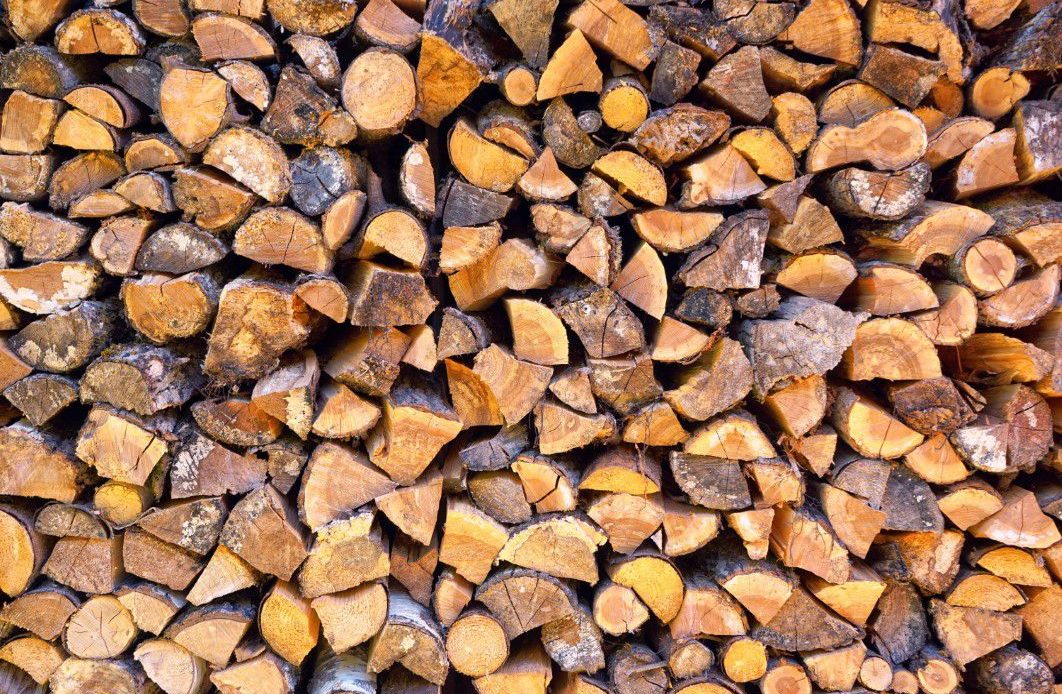

We’re here to help! Wild Yards is a completely free website that is 100% dedicated to helping you create a wildlife-friendly, sustainable yard. Read more
WildYards is reader-supported. When you buy a product through a link on our site, we may earn a comission. Every product is independently selected by our (obsessive) editors and our reviews are unbiased and objective. Read more about our mission or our privacy policy.
The very first layer of a Hugelkultur mound is comprised of wood. The wood layer is covered in additional layers of leaves, compost, manure, soil, and mulch, all of which encourage the wood layer to break down slowly over time. The type of wood you use in this layer can have a huge impact on how well your garden performs. So what are types of Hugelkultur wood to avoid, and which woods should be used instead?
Allelopathic trees that produce substances that kill surrounding plants, such as black locust and tree of heaven, shouldn’t be used in Hugelkultur. Other trees, like cedar, juniper, and Osage orange, can take too long to break down. But oak, apple, and maple woods work well, so choose them instead.
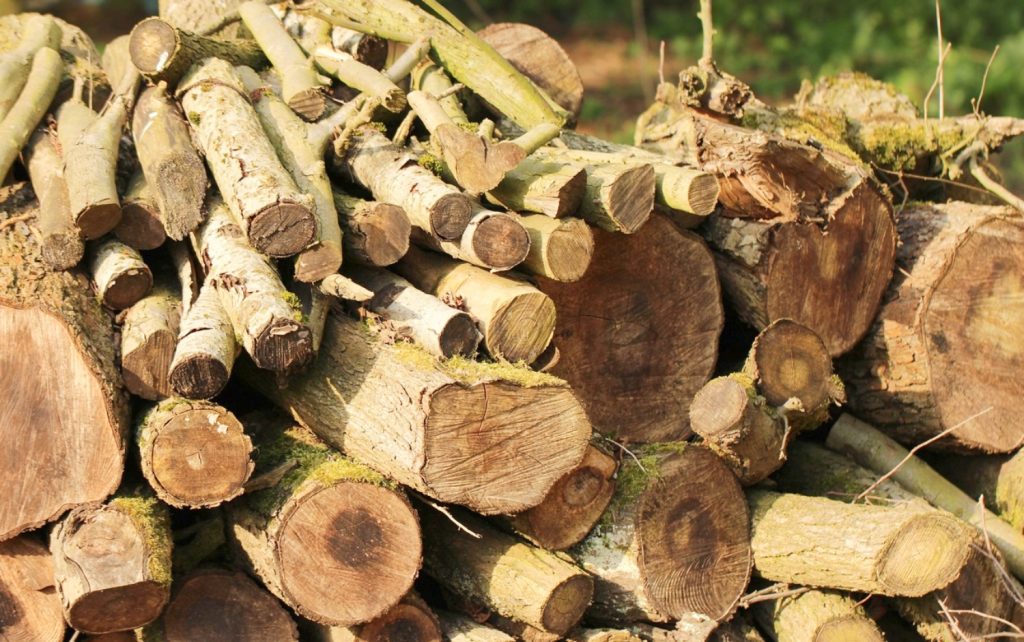
What kinds of Hugelkultur wood should you avoid?
There are many kinds of wood that are suitable for your first Hugelkultur layer. But there are also a few that you should be careful to avoid. So before adding more layers to your Hugelkultur mound, double-check to make sure you’ve excluded the following trees.
Tree of heaven
Also known as ailanthus, most people consider tree of heaven to be a weed. This invasive species has the added disadvantage of being popular with the spotted lanternfly, a planthopper that can destroy vegetable plants and fruit trees almost overnight. Even when their preferred host has been removed, lanternflies will stick around to consume other vegetation.
There are a couple of reasons why you don’t want to use tree of heaven in your Hugelkultur mounds. The first is that the logs can perk back up. Placing pieces of tree of heaven at the bottom of your Hugelkultur could encourage them to sprout — and because these trees are so invasive, that could leave you with a serious problem on your hands.
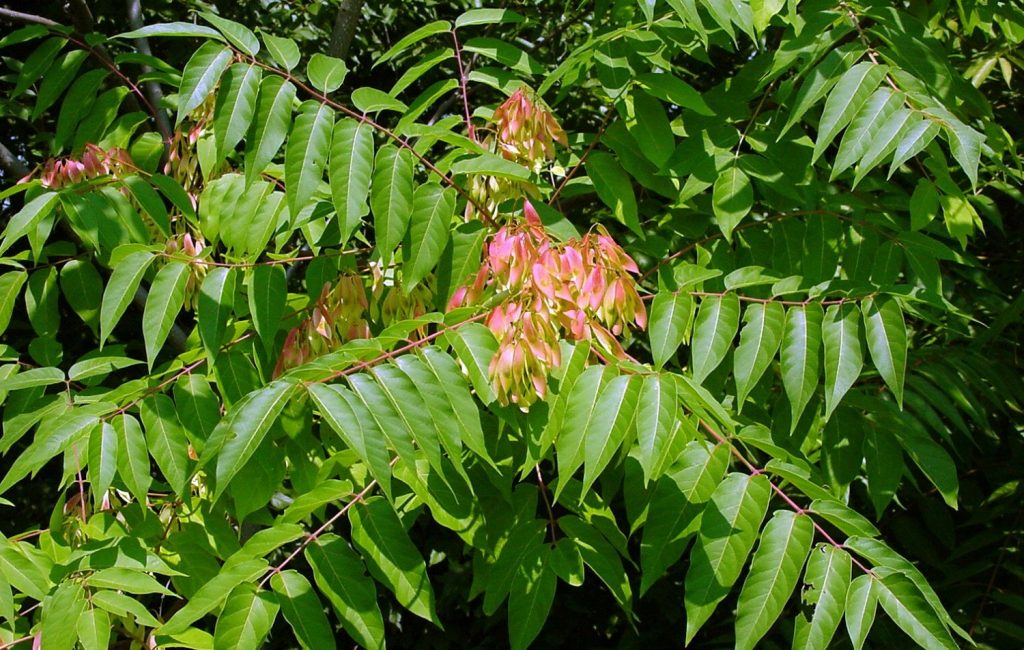
The second reason why tree of heaven is a Hugelkultur wood to avoid is that this species inhibits plant growth. Ailanthus tree extracts work to destroy their competition leaving more nutrients for them. Trees that secrete substances designed to kill surrounding plants are called allelopathic trees. Using tree of heaven logs in your Hugelkultur can stunt plant growth and reduce crop yield.
Black walnut
Another allelopathic tree, black walnut produces a compound called juglone. This substance can poison plants up to 80 feet away and is so strong that it can prevent many plants from germinating at all. Signs that a plant is suffering from juglone poisoning include brown leaves, withering, and stunted growth.
Because black walnut actively works to kill nearby plants, it’s a poor choice for your Hugelkultur mound. Interestingly, some fruit plants are immune to juglone poisoning. So you can still use the black walnut trees on your property to create wood chips to use as mulch for quince, peach, cherry, and plum trees.
Pecan
Pecan wood also contains juglone. Because these trees require a ton of nutrients and water to produce, they can’t afford the competition. But, because of this, they’re not an ideal choice for Hugelkultur beds and should be avoided. Pecan wood chips, on the other hand, are highly beneficial to the soil, significantly increasing the organic matter that plants need to grow well.
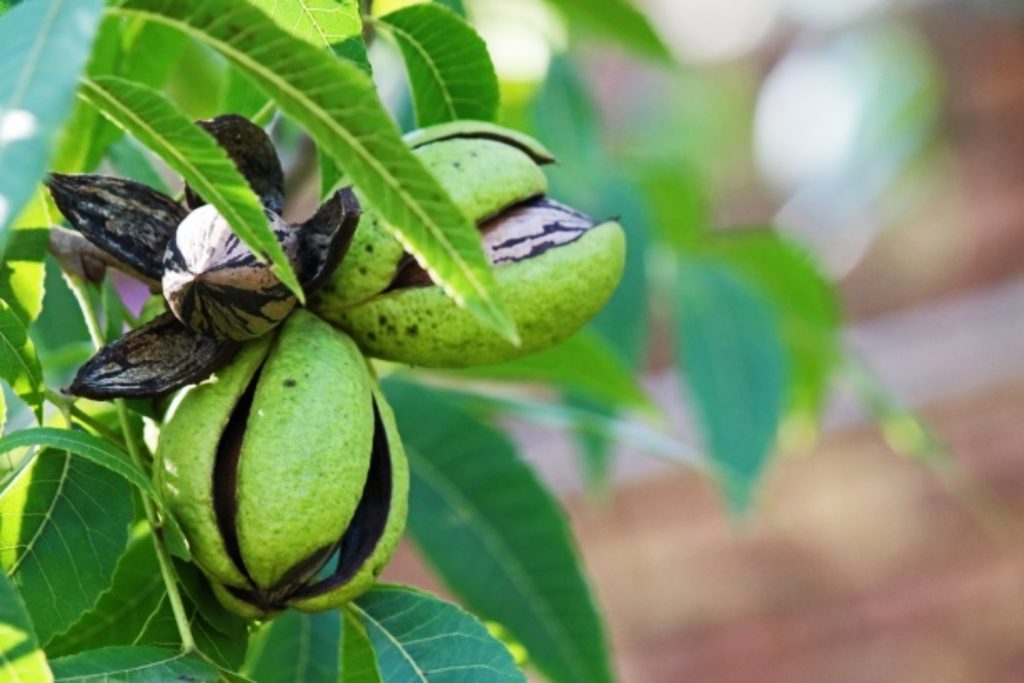
Cedar
The good news is that cedar doesn’t release any harmful toxins, so it won’t inhibit growth. Unfortunately, cedar is resin-heavy and extremely rot-resistant. It can take years for cedar logs to start to break down, sometimes decades. So while it’s okay to use a couple of cedar stumps in your Hugelkultur, it shouldn’t make up the bulk of your log layer.
While cedar may not be the best choice for your log layer, it can work very well as a mulch. Because cedar is rot-resistant, cedar mulch can last much longer than mulches made from other woods. Cedar extracts also work to repel harmful insects to keep the plants in your Hugelkultur mound bug-free (homemade insecticides can help keep insects at bay, too!).
Osage orange
Like the black locust tree, Osage orange trees can take years before they start to degrade. This is because the vascular system of the Osage orange becomes clogged with dead cells, so there’s no airspace for water to penetrate. The result is an incredibly rot-resistant timber that won’t provide enough nutrition for the plants in your garden because it simply doesn’t break down fast enough.
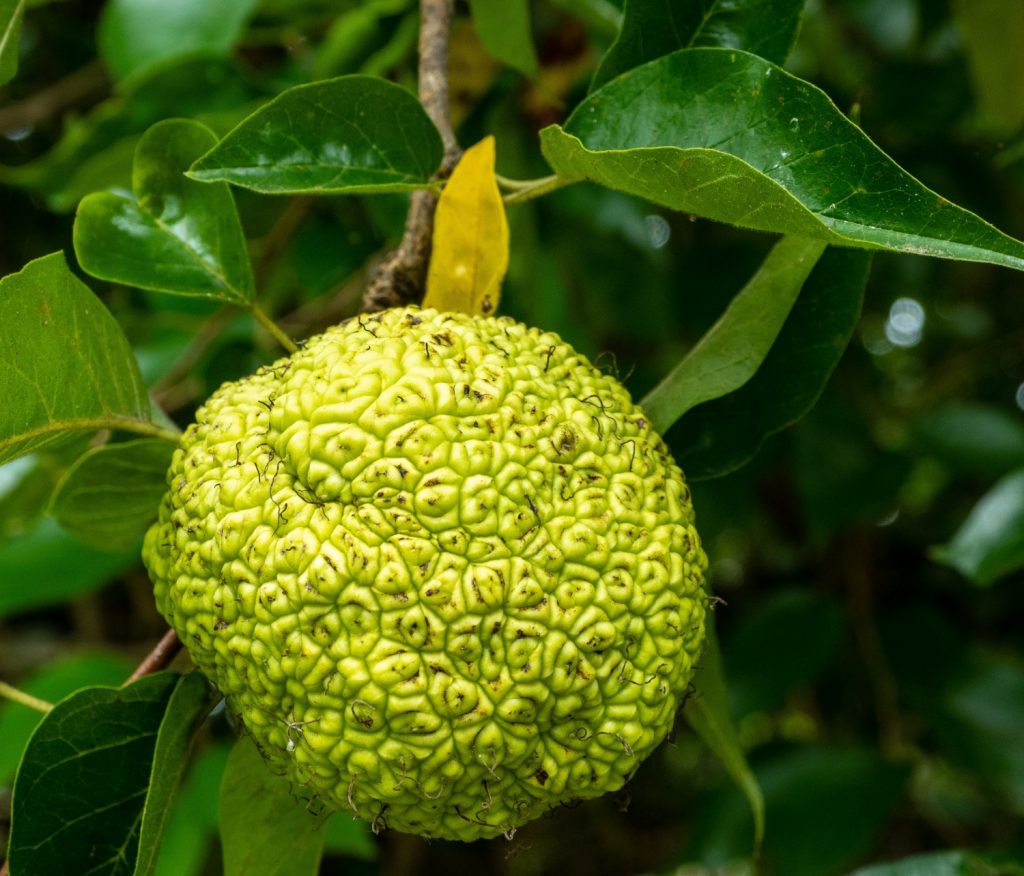
Black locust
Also called false acacia, these trees are covered in thorns, leading many homeowners to chop their black locust trees down. Because these trees are invasive, it’s not uncommon to remove huge groves of black locust trees at one time. If you have a bunch of black locust trees on your property, it can be tempting to use them in your Hugelkultur, but because they take so long to break down, you shouldn’t.
Juniper
Juniper trees are much like cedar trees — in fact, in certain parts of the United States, juniper trees and cedar trees are considered interchangeable. They’re not, of course. Cedar trees are tall evergreens with fan-like leaves. Juniper trees are also evergreens, but they’re not really trees at all, they’re more like tall shrubs. And they produce hundreds of tiny berries that deer love to nibble on. But because juniper is just as resin-heavy as cedar, it, too, should be excluded from your Hugelkultur beds.
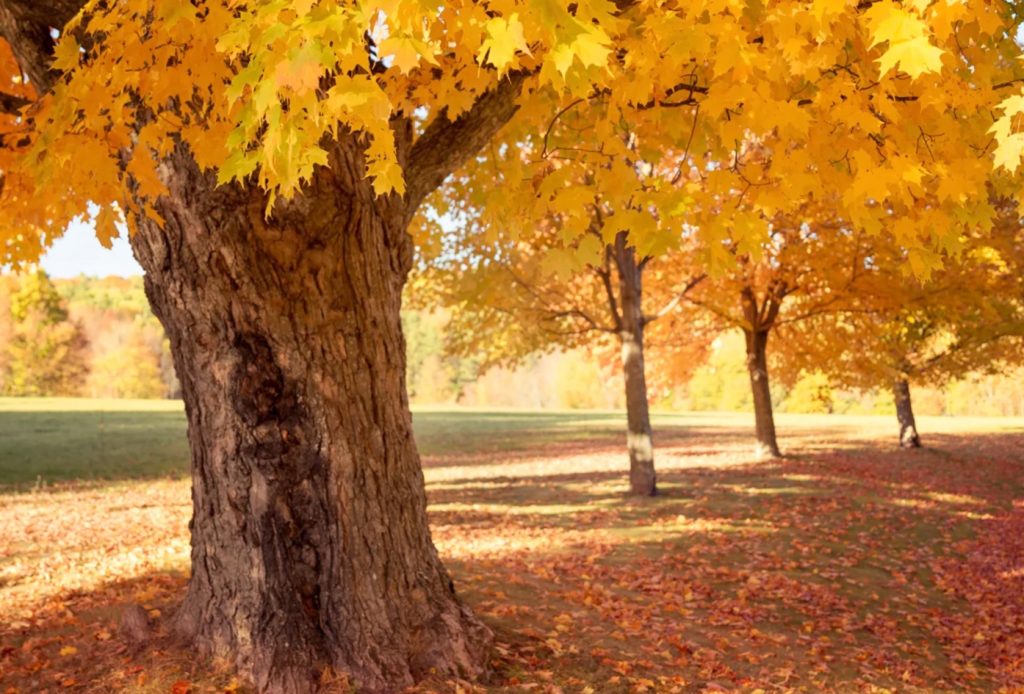
Which hardwoods can be used in Hugelkultur?
Hardwoods are the gold standard of Hugelkultur woods. These woods break down at just the right rate, providing the plants in your garden with ample nutrition for years. A good Hugelkultur mound can last for more than a decade, and using the appropriate hardwoods is the best way to extend the lifespan of your Hugelkultur mound. Here are some of the best hardwoods for Hugelkultur.
Oak
Oak wood is widely available throughout the United States, so it’s pretty easy to find. Even if you haven’t got any oak on your property, it’s not too difficult to track down oak firewood — and because firewood is already chopped up, using it for the log layer of your Hugelkultur mound can save you an extra step. If you have plenty of oak at your disposal, you can use all oakwood for your log layer, then turn the extra into wood chips to use as mulch when you’ve finished your Hugelkultur mound.
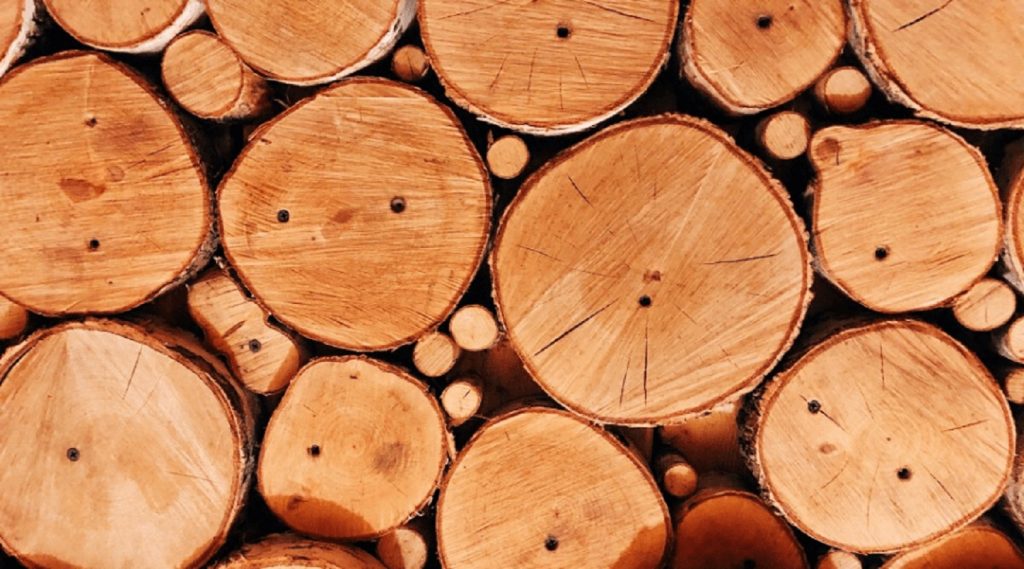
Apple
If you’re lucky enough to live near an apple orchard, try to get your hands on some apple wood, because it’s some of the best wood for Hugelkultur. Applewood starts to break down much more quickly than resin-heavy hardwoods cedar and juniper. But because apple wood is also a hardwood, it can last for years, prolonging the life of your Hugelkultur mound.
Maple
Maple trees are among the fastest-growing hardwoods. These trees can grow in zones 3 through 9, so they’re easy to find all across the U.S. Maple wood is an ideal Hugelkultur wood because it starts to break down quickly, but because it’s hardwood, it degrades slowly.
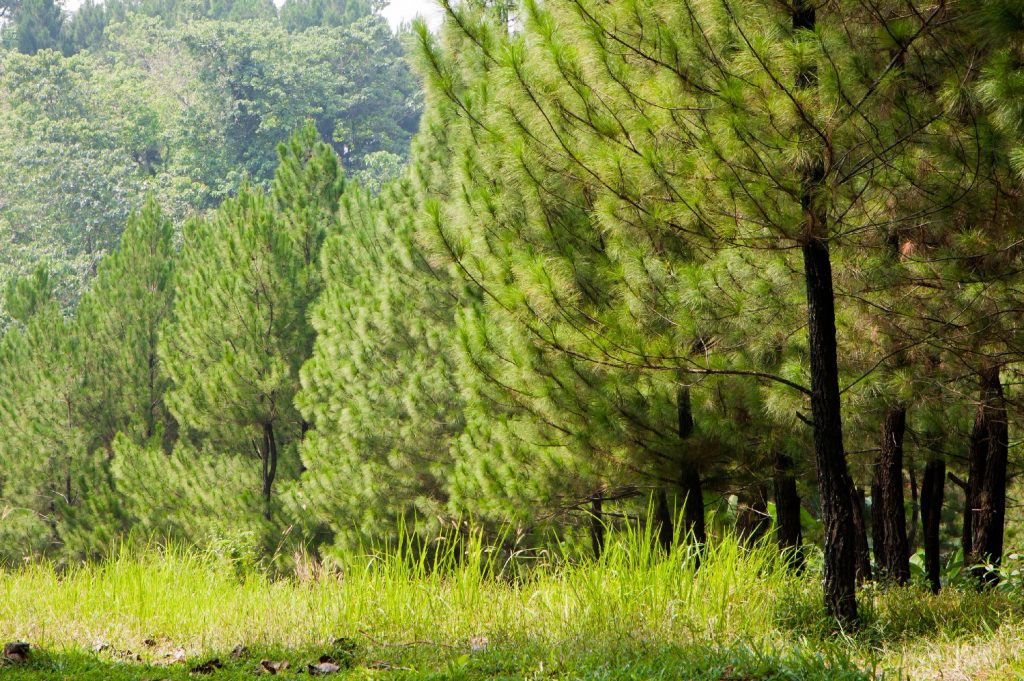
Which softwoods can be used in Hugelkutur?
The log layer of your Hugelkultur mound can be composed entirely of hardwoods. But, if you’re having trouble tracking down enough hardwood, you can pad the layer out with some softwoods, too. Here are some of the best softwoods to use in Hugelkultur.
Pine
Some argue that pine wood can lower the pH of the soil, making it more acidic over time. But, while pine needles can be acidifying, pine wood is not. And even though this wood, like cedar and juniper, can be resin-heavy, it’s also much softer by comparison. Pine wood is fairly porous, and when covered over in mulch, compost, and dead leaves where it can be kept warm and moist, it breaks down very nicely.
Spruce
Spruce is another Hugelkultur wood that’s worth your consideration. Even though it’s somewhat resin-heavy, it also breaks down fairly quickly. For best results, it should be used in tandem with hardwood, like oak, to help stagger the breakdown rate. But, otherwise, spruce can be great for use in Hugelkultur.
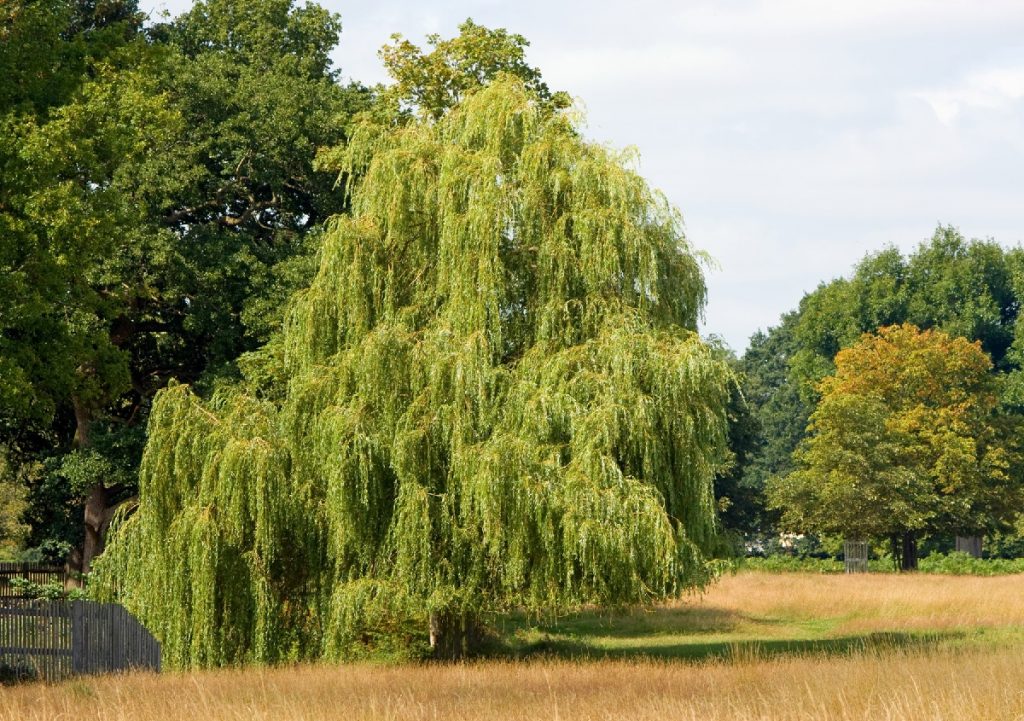
Willow
This one’s trickier than pine and spruce. As a softwood, willow can be very useful in Hugelkultur. It breaks down nicely. But, unfortunately, willow is incredibly adaptable. These trees never say die. In fact, willow trees secrete regenerative substances that can be used to create your own rooting hormone.
Baby willow trees frequently spring up from old stumps. And new willow shoots can grow from seemingly dead logs. So if you want to use willow in your Hugelkultur layers, make sure they’re old, dehydrated, and have no chance of springing back to life.
Creating the best log layer for your Hugelkultur
When building your Hugelkultur, it’s best to use whatever materials are available locally. Hugelkultur mimics what happens on the forest floor, with logs being covered in dead leaves and other organic matter. The trees native to your region are best suited to restoring minerals that your soil is naturally deficient in.
While the softwood and hardwood trees mentioned here can help you build the best Hugelkultur possible, it’s even more important to avoid allelopathic trees as well as those that break down slowly. Keeping these harmful woods out of your Hugelkultur helps the plants in your garden stay healthy.

I live in the desert southwest, so I don’t have a lot of options for wood types for hugelkultur. Can I use non-bearing mulberry, Palo Verde, and creosote bushes?
Hi Pat, thanks for your question! Non-bearing mulberry and palo verde should work just fine for your hugelkultur beds. But creosote bush produces growth-inhibiting compounds that may actually prevent your garden plants from growing, so it’s best to leave it out.
We live in the high desert. We have a lot of Pinyon Pine, the smaller Scrub Oak trees, and the Mesa is full of Aspen trees. I’ve been told not to use the Pinyon Pine or the Scrub Oak; however, it sounds like you think either of these might be fine (please confirm). Also, Aspen are unique in that acres and acres of Aspen trees stem from one mother tree. So, would Aspen be sprouting in my hugelkultur and take over my raised beds?
Also, we have a lot of landscaped flowering sage and wild sage brush; are they okay in hugelkultur or will they flower and come up through to my planting area? Is there a list of shrubs that are good to use and a list of shrubs to avoid?
Your expertise would be greatly appreciated. Thank you.
Hi Patty, thanks for your question! Pinyon pine and scrub oak should work well for your hugelkultur bed provided you use a mixture of both. Pine breaks down quickly and oak breaks down slowly. Using the two together will help bridge the gap in breakdown rates to keep the plants in your garden fed. As for the aspen, if you’re careful to use dead trunks and branches and exclude roots, it should be fine. Because the wood layer is so deep in the hugelkultur bed, it’s difficult for young trees to make it all the way to the surface. But if you’re worried about little seedlings invading your garden, a thick layer of mulch can help. As for sagebrush, this plant is allelopathic, meaning it produces chemicals designed to kill surrounding plants in order to improve its own chances of survival/reproduction. For this reason, it’s not an ideal choice for hugelkultur.
Hello,
Thanks for creating and maintaining this website!
We live in a drier area of Southern California that can get to over 110 degrees in the summer.
Can we successfully use hugelkultur to grow our own vegetables here? Also, can we use eucalyptus or pepper tree wood in a hugelkultur raised bed?
Hi Claire! It is possible to create a successful hugelkultur garden in Southern California, but there are a few things you’ll need to keep in mind. The extreme heat and dry conditions can affect the breakdown rate of the beds. So you’ll need to make sure to water the hugelkultur deeply in the months following its creation to help kickstart the decomposition process. Also, be sure to choose plants that can tolerate such an arid climate (tomatoes, peppers, squash, rosemary, thyme, lavender, etc.). Check the moisture level of the soil regularly and water the plants well 2 to 3 times a week (or more, if necessary) to help them beat the heat. Try to place the beds where plants will get afternoon shade to help them conserve moisture. As for eucalyptus and pepper tree wood, unfortunately, neither is ideal for a hugelkultur bed. Both of these trees are allelopathic. Additionally, eucalyptus wood has a high oil content, which, in a warm hugelkultur bed, could combust. Try looking for oak wood, instead. Thank you so much for your comment!
Hi Claire,
I’ve just acquired an allotment in the UK and intend to install several hugelkultur raised beds. I’ve hauled about twenty 6″ logs between 4′ and 6′ onto my allotment and now have been made aware that they are sycamore which some websites say are ok and several others warn against.
Is there a definitive answer here – will they be ok.
Thanks in advance for your considered reply.
Michelle – sorry for posting to ‘Claire’.
Hi Tom, thanks for your question! It’s a good one, too. There is some evidence that sycamores are allelopathic, meaning sycamore wood may inhibit plant growth. However, it’s believed that the sycamore’s allelopathic compounds break down over time, so logs that have been aged for a year or more are much safer to use. Another concern is that sycamore wood is somewhat slow to decompose, so consider cutting the logs up into small pieces to encourage them to break down more quickly. You should also try to mix in some softwoods if possible. If softwood logs are unavailable, then look for pine wood shavings at a local feed store or wood mill to add to the mix. Using a combination of hardwoods and softwoods will keep your plants fed for much longer. Overall, if you’ve already committed to using the sycamores, and there are no alternative hardwoods readily available, don’t worry about it too much. Just be sure to include plenty of other organic materials (lawn clippings, leaves, compost, etc.), and your plants should grow just fine. Best of luck with your future gardening endeavors!
Someone has offered me a bunch of Snowball Bush cuttings. Are those ok to use in hugelkultur beds?
Hi Ellen! Snowball bush cuttings should work just fine for your hugelkultur beds. Thanks so much for your question!
Hi Michelle,
Thank you for all the great information and advice on gardening. I have read elsewhere that when building a hugelkulture the logs should be cut and placed vertically to promote wicking to the soil. Is this better than laying long logs horizantally?
Hi Richard, this is a great question! The best way to lay the logs in the base layer of a hugelkultur bed depends on several factors. Hardwoods take longer to break down and should be laid horizontally, so a greater surface area of the wood comes into contact with the organic materials to kickstart the decomposition process. Softwoods, on the other hand, can be set up vertically to slow the breakdown rate so the beds last longer. The climate also plays a role. In drier environments where you’d want to make sure the beds stay moist, it would be better to lay the logs horizontally to trap the moisture. In moist climates where you’d need to the beds drain well, then placing the logs vertically can certainly help. Ultimately, as long as you use the right woods, neither of these methods is a bad choice. If you have the space, it might be worth trying both methods to determine which one works best for your garden. You could also try alternating laying the logs horizontally and vertically within the same bed. Thank you so much for your question, and good luck gardening!
Hello! I have been looking all over to see if a fig tree wood and Brazilian pepper tree would be ok. Any idea if either of these would be suitable?
Hi Robin, good question! Fig tree wood should be A-OK, but because it’s hardwood, you may need to cut it into small pieces to make sure it starts breaking down faster. You can also mix it with a softwood to bridge the gap in breakdown rates. While fig tree wood is fine for use in hugelkultur, Brazilian pepper tree is less than ideal. These trees are allelopathic, producing chemicals designed to kill surrounding plants, which, as you can imagine, can have devastating consequences for your fruits and veggies. So it’s best to keep Brazilian pepper wood out of your hugelkultur beds. Thanks so much for your question, and best of luck gardening!
Hi hi!
What about old lumber?
Plywood?
Maybe for just ornamentals and not food?
Hi Mike! Old untreated lumber can be used in hugelkultur beds. So if the plywood in question is untreated, then it should work fine. Just be sure to cut it up into smaller pieces to kickstart decomposition. Treated lumber should be left out of your hugelkultur beds, though, whether they’re ornamental or not. Modern lumber treatments contain inorganic forms of copper, arsenic, and chromium, which, when allowed to leach into the soil, can have a detrimental effect on the ecosystem. Thank you for your question, and good luck gardening!
Hi Michelle, I’m in Ontario Canada. I’ve been looking around the internet to find out if Linden wood and leaves are okay to use for my yet to be created metal 30″ raised bed? I just had 2 young maple trees cut down and saved a few logs, and have branches from my Linden tree. Plus in the Fall I’ll have tons of Linden leaves and Maple leaves from my neighbours tree that overhangs my yard! Is Linden a hardwood? I also wondered if I should set the bed on top of stone pavers to keep out burrowing animals? Right now the space has weed fabric on it, and I know the bed is open at the bottom. Thank you in advance! x
Hi Avis, thanks for your questions! Linden is a hard wood that should pair very well with maple wood in your hugelkultur bed. Both of these are much softer hard woods compared to oaks, so they’ll break down at a more moderate rate. The leaves of the linden tree should work just fine, too. And you can certainly set the hugelkultur bed up on stone pavers — that’s a great idea! You might also try chicken wire or a fine wire mesh to keep out those pesky burrowing critters. Thank you again for your questions, and good luck with your hugelkultur bed!
Hi Michelle,
Thank you very much for your reply! I am still waiting for the raised bed to arrive, I think it might be a next spring project for the actual growing in it at this rate. I have another question or two if you don’t mind? The concrete pavers I mentioned, after some thought, will putting them underneath interfere with drainage? Also if I get it set up this year with everything including soil, should I cover it over the wintertime (snow) with a tarp or something? Or can I leave it open to the air/elements? Thanks again for being so kind to help me. 🙂 Avis
Hi Avis, no problem, I’m happy to help! If you space the pavers apart beneath the beds, leaving 1/2″ to 1″ of space in between each paver, that should give the beds good drainage. You might also consider placing the pavers beneath the perimeter of the beds only, leaving the bottom completely open, or covering it with chicken wire or something similar to keep burrowing critters out. As for prepping the beds over winter, covering is best. Covering the beds with a tarp helps the beds retain warmth and moisture over the winter, which will kickstart the breakdown process so the beds are just right for planting in spring. I hope this helps you, and best of luck gardening!
Thank you for the reply, it’s very helpful Michelle. I have put down black weed cloth because under the layer of soil is old concrete where long ago someone had a parking pad there! So undiggable! I put the cloth down to kill weeds and make a foundation. Then I thought of the pavers and now with your information, I think I’ll do as you suggest and put them around the edges, and get some chicken wire. I don’t want to get into having to attach from inside somehow, so I think I’ll wrap the pavers in the wire and tuck it underneath to hold, then the bed once weighted down will hold it firm on top? That’s my idea anyway! The beds are now supposedly arriving on the 8th August. I’ll build it and I suppose I can always put some winter veggies in to begin with.. we’ll see how ambitious I get! 🙂 Thank you again, you’re the best!
Hi Avis! That’s a smart move putting the weed cloth down first. Wrapping the pavers with the wire and layering soil on top should work just fine. Have fun with your new garden beds, and good luck with those winter veggies!
avocado wood for hegulkultur? I can’t find any listing that says yes or no
thanks
Hi FlowerPower! There is some evidence that the leaves of the avocado tree have allelopathic qualities, which could make them a poor choice for your hugelkultur. That said, there is no documentation of avocado wood being allelopathic as far as I’m aware, so it should work just fine for your hugelkultur beds. Thank you for your question, and good luck gardening!